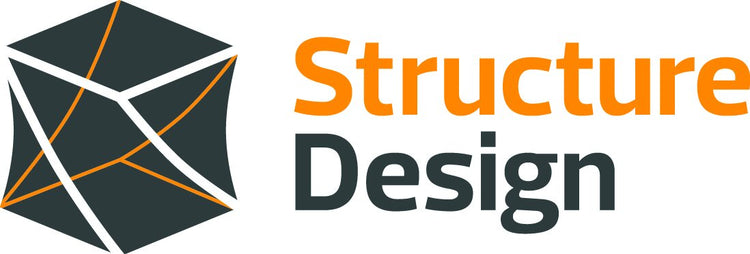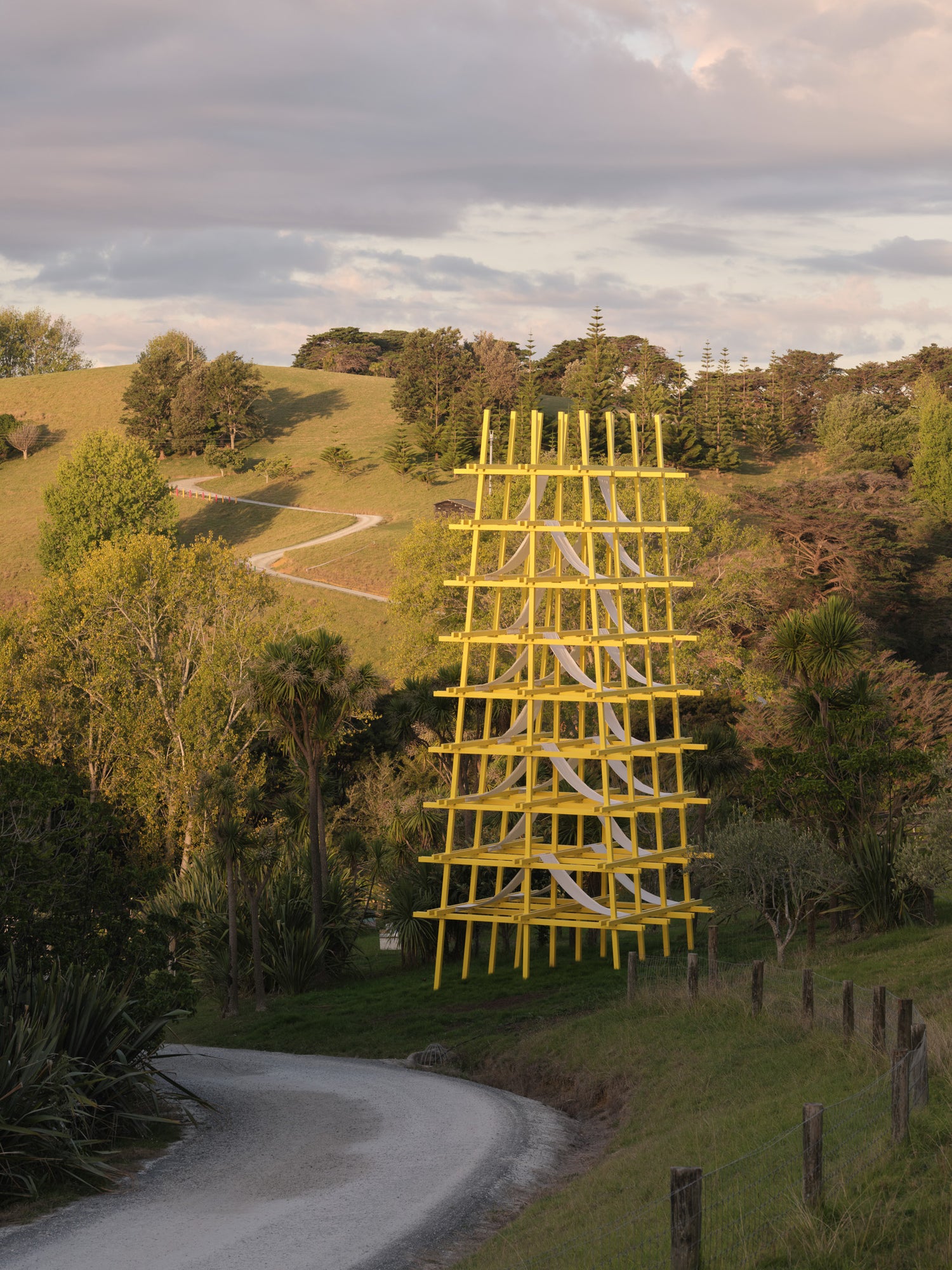
Brick Bay Folly 2025: Yellow Post
Designed and built by George Culling, Oliver Prisk, Henry Mabin, and André Vachias (onsite construction led by Elliot Western) using sustainably sourced glulam timber, polyester fabric, stainless steel fixings, and Resene paint.
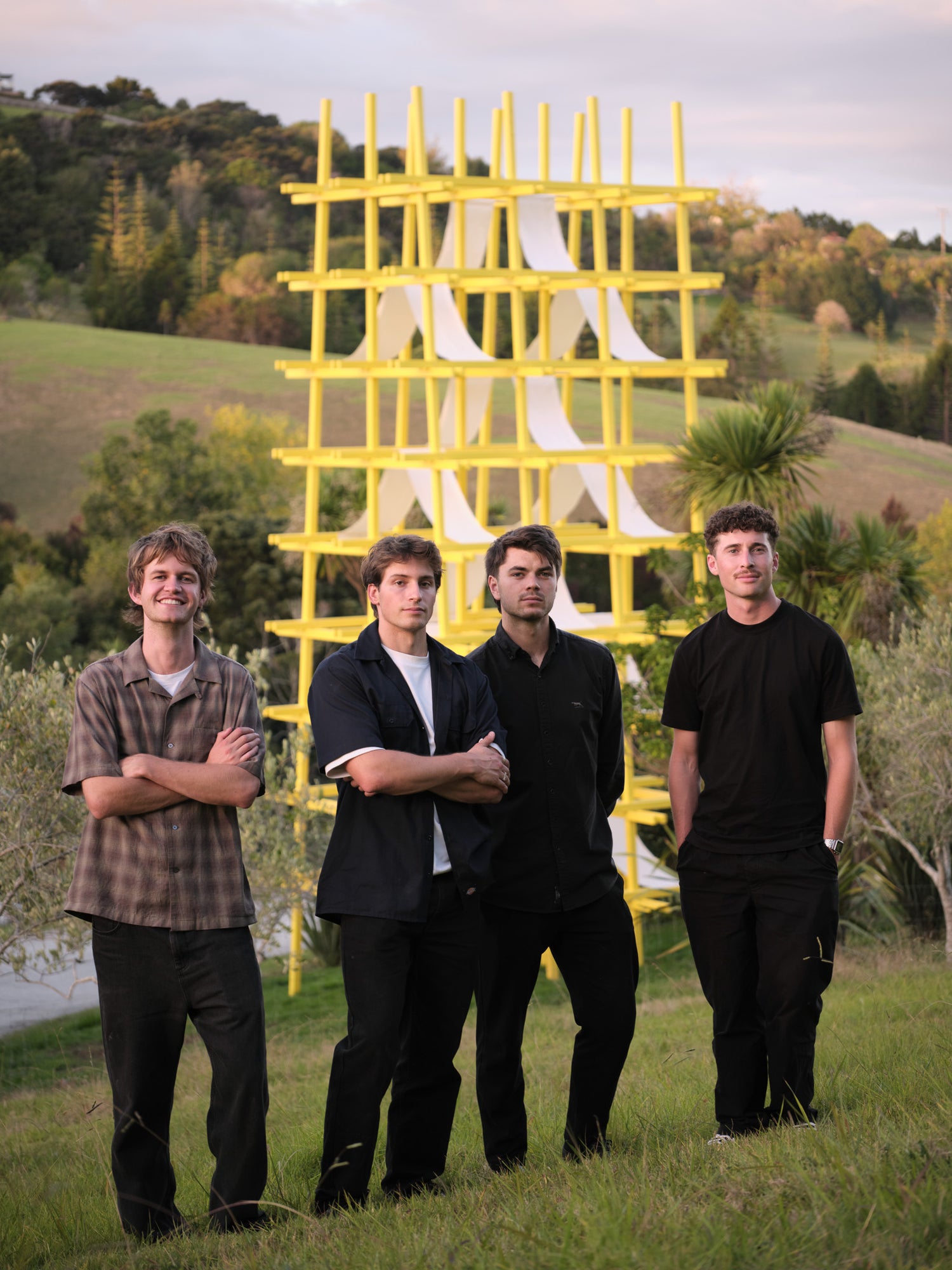
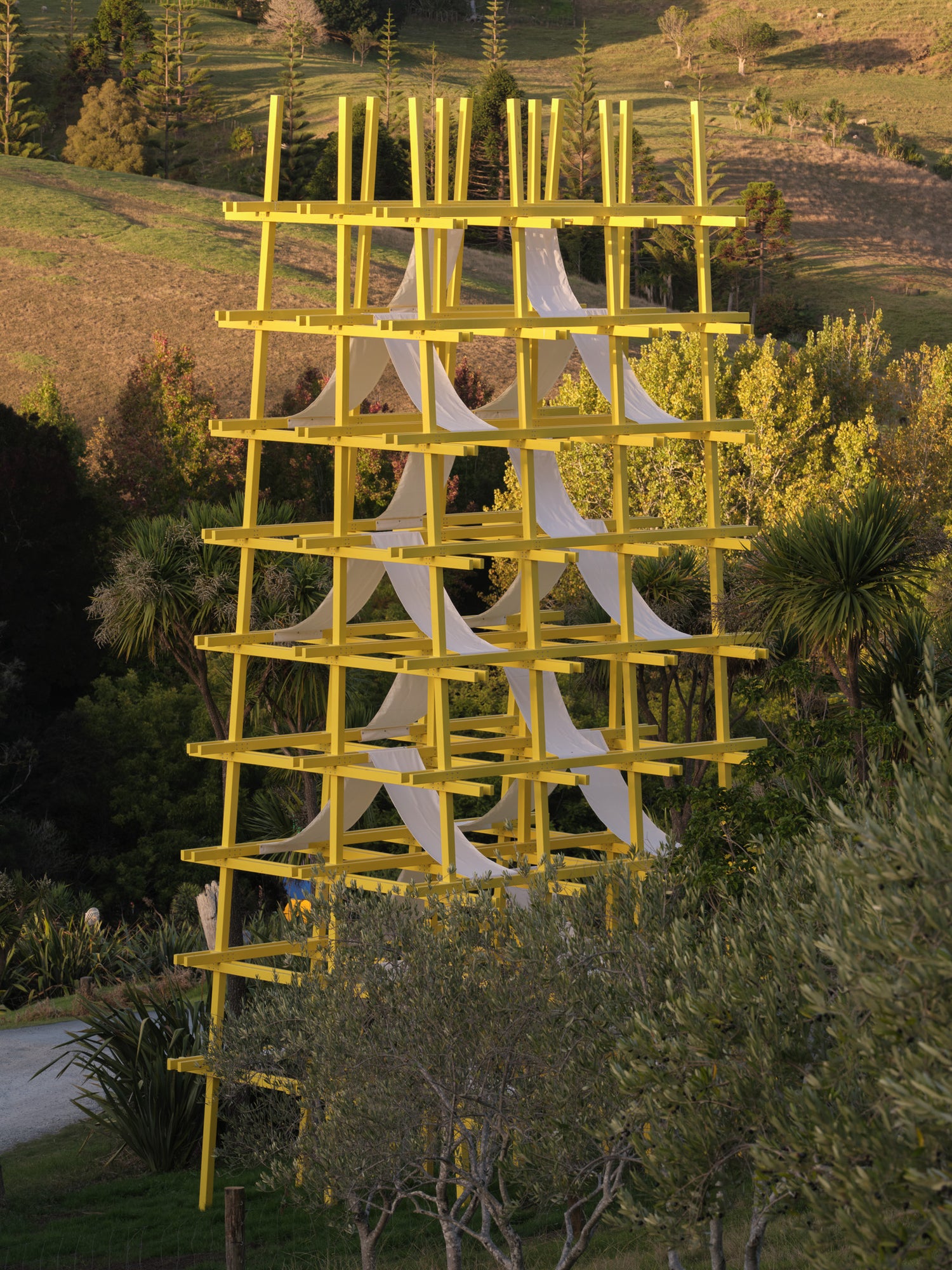
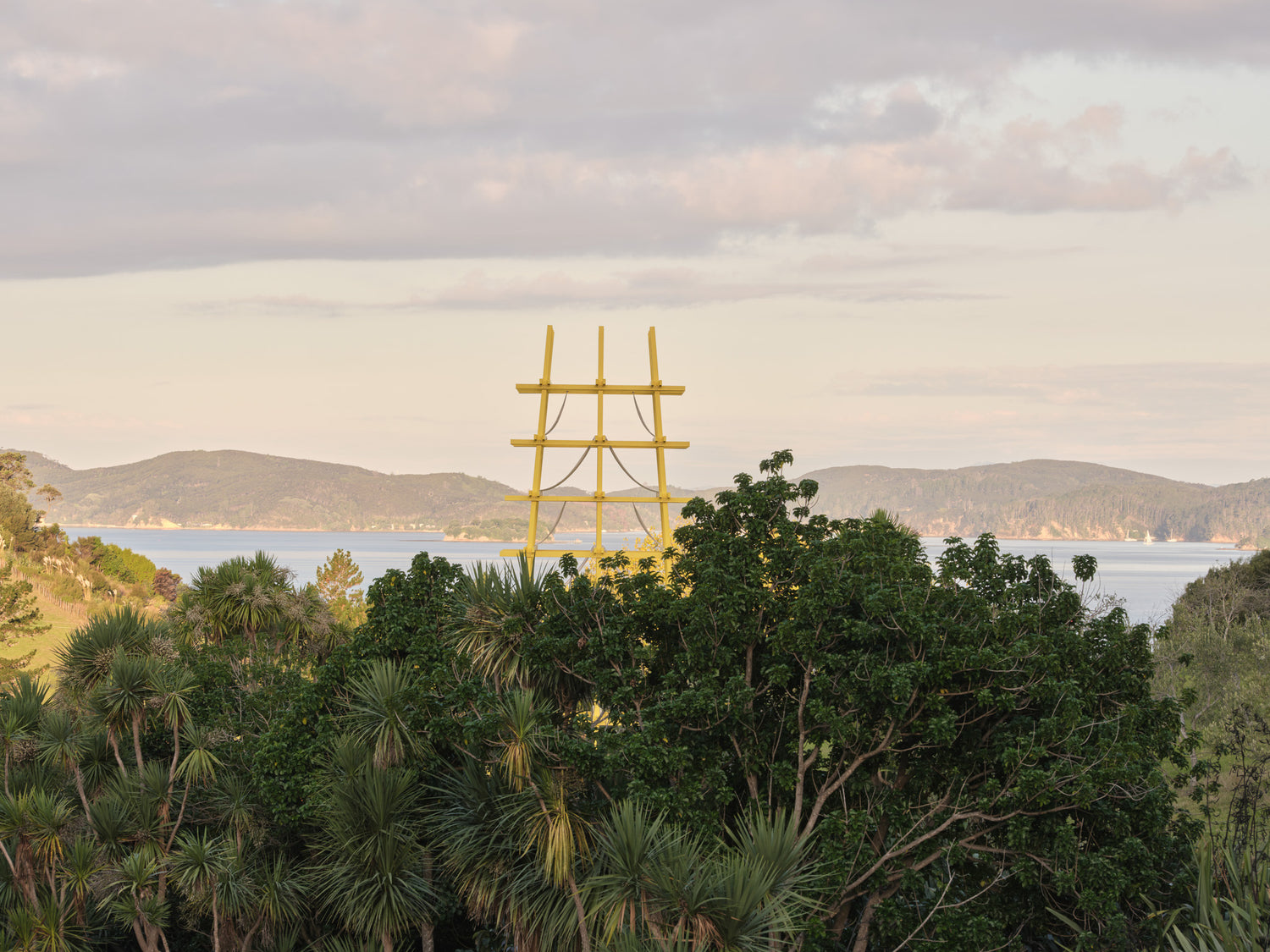
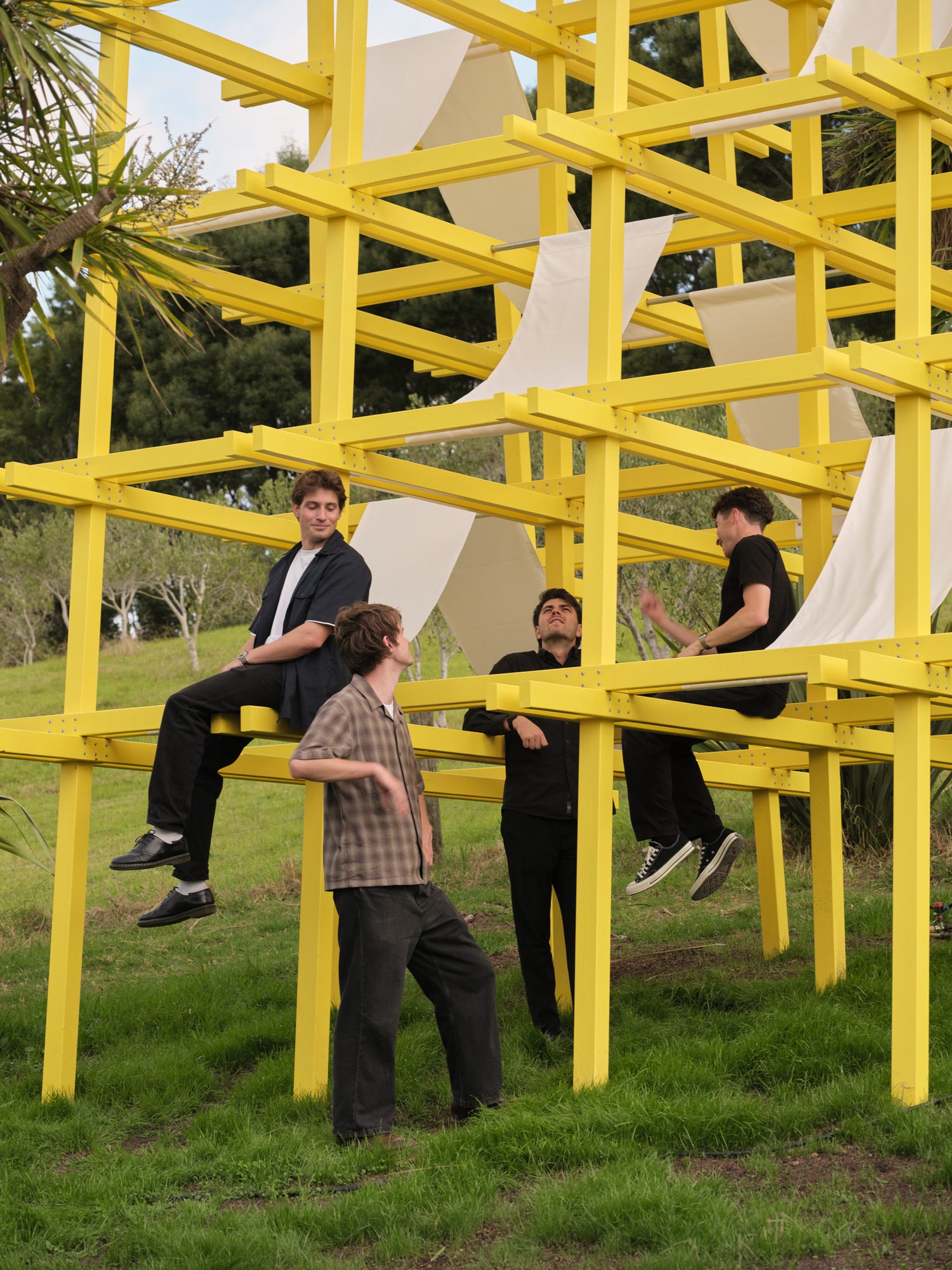
Yellow Post marks the 10th Folly at Brick Bay, and with its vivacious colour, towering height and reference to the act of gathering, it is the perfect Folly for the anniversary.
The four team members - George Culling, Oliver Prisk, Henry Mabin and Andre Vachias - who have remained close since studying architecture together at Te Herenga Waka Victoria University, started with the playful thought: “how cool would it be to build a giant yellow tower at Brick Bay?” But the key inspiration for the design sprouted from learning about traditional hākari structures in university lectures with Dr. Robin Skinner. Seeing visionary paintings by European settlers of hākari built by Maori further sparked the team’s curiosity.
Hākari were enormous scaffold stages, once constructed by iwi in the Northland settlement of Kororāreka (now Russell). Utilising resources of native hardwoods such as kauri and puriri and latched together with torotoro vines, these enormous towers were used by iwi as markers for congregation, celebration and ceremony, such as weddings, tangi, the naming of children and the resolution of conflict. Amazingly, they were temporary buildings, often only erected for a few days before disassembly. But in the short time they were erected, they functioned as places of manaakitanga. As Prisk describes, “what really struck us was how these monumental timber edifices articulated a delicacy and consideration towards temporal building.”
Aware of the colonial lens through which they were viewing the hākari, the team consulted with local iwi Ngāti Manuhiri to understand the perspective from Te Ao Māori, before moving forward with the development of their design.
Taking Yellow Post from concept to buildability was a complex process, through which the team was coached by construction, engineer and architecture mentors. This involved a number of steps such as planning the screw pile foundations, designing the customised scaffolding, building a 1:1 node in their backyard, planning the logistics for the arrival of their materials and 4 weeks of painting the timber members at Unitec in the lead up to Christmas. The project team were very fortunate to have ex-classmate and building apprentice Elliot Western on hand to led the onsite construction, enabling them to avoid a degree of trial and error, and to cut their build time considerably. The team reflect fondly on their time building on-site at Brick Bay, camping at the woolshed, waking up to sheep outside their tents each morning and working “extended tradie hours” to meet the build completion deadline.
The completed Yellow Post stretches 11 metres skywards, a myriad of yellow beams forming a union of 108 intersecting nodes. There is a strong sense of geometry in the matrix, and of interconnectedness - a structural metaphor for the Folly’s intention of bringing people together. The fabric sheets create a clever maze of mass, light and shadow, and are a reference to the terraced stages from traditional hākari that were used to store kai for the gatherings. As Culling notes, “We tried to extrapolate this internal element through the use of the fabric sheets to create a dialogue between structure and what is held within the structure.”
Painted in a celebratory yellow hue (Resene ‘Bloom’), the Folly has taken on its own life as a prominent beacon, signalling the arrival and departure of visitors to Brick Bay, and becoming a place of congregation. And with glimpses of the tower from all over the property, it has a remarkable sense of identity, making its place known and felt within the landscape. The team describe the Folly as having a ‘structural wonderness’, and as Culling remarks: “No matter where you are, you will see it, and it will greet you.”
BRICK BAY FOLLY 2024: TOP 5 entries
Every year, the Brick Bay Folly competition attracts a wealth of imaginative and bold ideas. This year was no exception, and we’re thrilled to unveil the five finalists for 2025. Congratulations to these outstanding teams:
- Kōmaru – by Youngi Kim and Eunjung Kim
- Putaputawētā – by Clara Hanssen, Jade Myburgh and Brendan Buckle
- Te kākā whakaangi i te tā – by James Holyoake, Brendan Murphy and Titan Li
- Whakapiri o te tangata – by Mikala Watene, Saige de Souza and Angel Qiu
- Yellow Post – by George Culling, Oliver Prisk, André Vachias and Henry Mabin
From the moveable canopies of Kōmaru, to the super-sized wētā hotels of Putaputawētā, the vibrant structure of Te kākā whakaangi i te tā, the exploration of pōhutukawa in Whakapiri o te tangata, and the bold latticed hākari of Yellow Post, each project reflects a powerful blend of creativity and curiosity.
Congratulations again to all five teams. Each design stood out for its unique vision and its resonance with the judging panel.
To read more, see the article by judge and Architecture NZ deputy editor Amanda Harkness in the September/October issue or online via Architecture NOW.
Thank you to everyone who entered the 2025 Brick Bay Folly. The standard was exceptionally high, and we look forward to announcing the winning team in early 2025, with the installation celebration planned for May.
The Folly judging panel
This year’s judges were Pip Cheshire from Cheshire Architects, Steve Cassidy from Cassidy Construction, Karmen Hoare from Resene, Peter Boardman from Structure Design, Keith Mann from Unitec, Amanda Harkness from Architecture NZ, Richard and Anna Didsbury from Brick Bay, and Jennifer Gao from the 2023 Folly winning team, whose folly was named Femmely Velues.


























